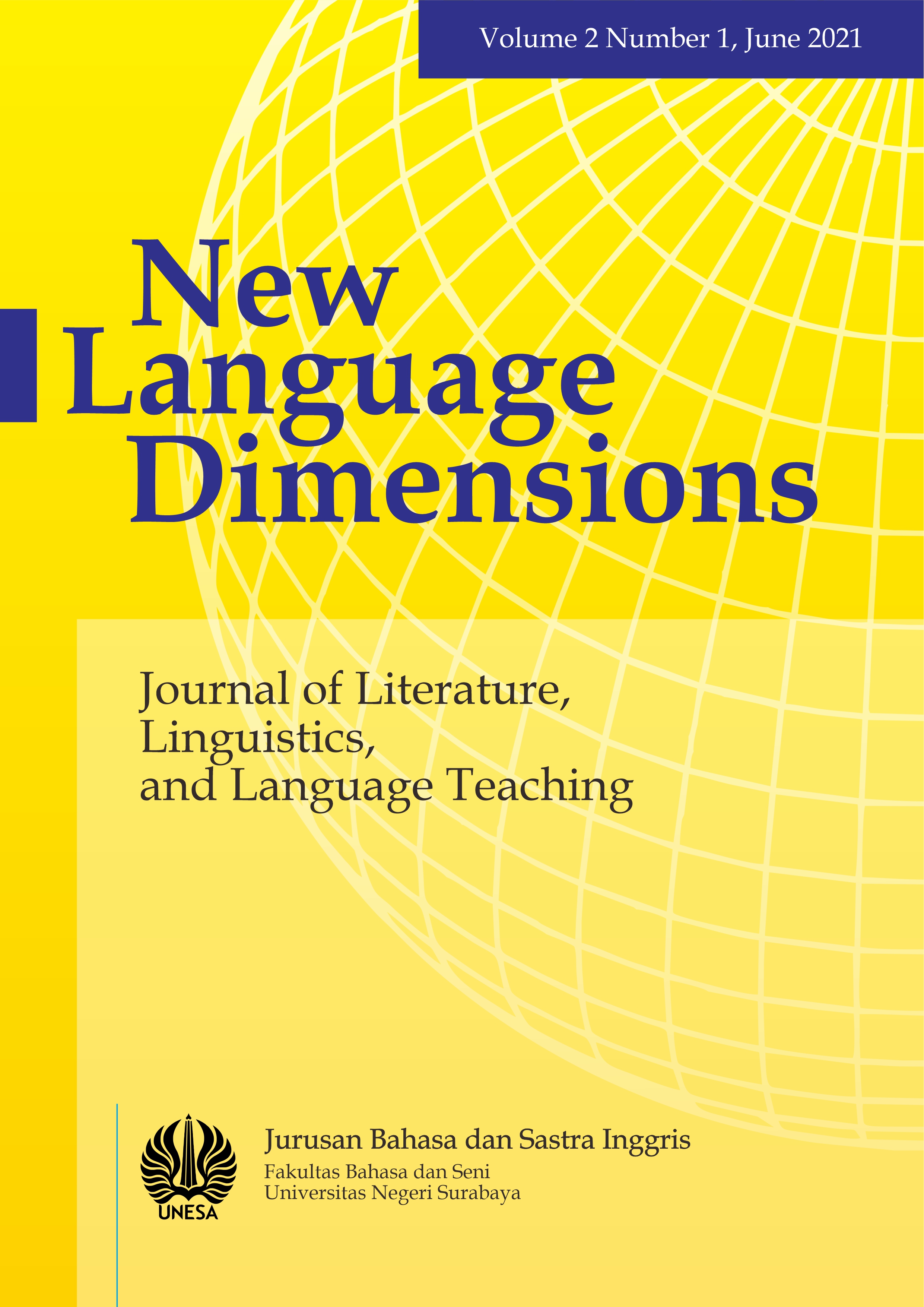Revealing The Translation of Slang Words in ˜Prison Breaks Movie Subtitling from English into Indonesian
DOI:
https://doi.org/10.26740/nld.v2n1.p41-49Abstract
This article has an objective to find out the kind of slang words that are used and to describe the translation procedures used in translating slang expressions in the transcript of this movie into Indonesian subtitles. In this study, the problem is what kind of slang words that were used in the movie and what strategy that is used for translating slang words into Indonesian. The data in this article is classified based on the theories of Allan and Burridge (2006) classification of slang, which classified slang into five categories: fresh and creative, flippant, imitative, acronym, and clipping.Translation strategy by Mona Baker was used to determine the strategies used for translating slang words, which include similar meanings and forms, similar meanings but dissimilar forms, paraphrase, and omission. This article is potentially intended to extend awareness of the techniques used by the subtitlers in interpreting the slang expressions in the subtitles of the film. and give information about what kind of slang that was used in this movie. Because the data was in the form of words or written language with the object subtitles that occur in the movie and are pronounced by the characters, this study used a qualitative method. This study employs a variety of methods to analyze data relevant to the problem at hand, with the first problem employing Allan and Burridge theory and the second employing Mona Baker theory. The findings revealed that the dominant slang that is used is flippant and mostly uses similar meanings but dissimilar form techniques to translate them. In general, this study has revealed that there are 3 types of slang that are found which are flippant, fresh and creative, and imitative. This study also revealed that there are three strategies to translate slang which are similar meaning and form, similar meaning but dissimilar form, and paraphrase.Downloads
Download data is not yet available.
References
<div class="WordSection1"><p align="left">Allan, K., & Burridge, K. (2006). Forbidden words: Taboo and the censoring of language. In <em>Forbidden Words: Taboo and the Censoring of Language</em>.</p><p>https://doi.org/10.1017/9780511617881</p><p>Baker, M., Square, P., & Abingdon, M. P. (n.d.). <em>A Narrative Account</em>.</p><p>Ciechanowska, A., & Kleparski, G. A. (2016).</p><p align="left"><em>On the semantic features of prison slang</em>. (January 2015).</p><p align="left">Dziedzic-Rawska, A. (2018). Principle of pithiness in US prison slang. <em>Lublin Studies in Modern Languages and Literature</em>, <em>41</em>(2), 12.</p><p>https://doi.org/10.17951/lsmll.2017.41.2.1</p><p>2</p><p align="left">Jorgen Amari. (2010). Slang lexicography and the problem of defining slang. <em>ORA Journal</em>, 111.</p><p>Khoshniyat, A. S., & Dowlatabadi, H. R.</p><p>(2014). Using Conceptual Metaphors</p><p>Manifested in Disney Movies to Teach</p><p align="left">English Idiomatic Expressions to Young Iranian EFL Learners. <em>Procedia - Social and Behavioral Sciences</em>, <em>98</em>, 9991008. https://doi.org/10.1016/j.sbspro.2014.03.5</p><p>10</p><p>Kusumastuti, A., Of, E., & Education, E.</p><p align="left">(2019). <em>Subtitle Analysis of the Idiomatic Expressions Used in the Subtitles of That Thing You Do¯! Movie</em>.</p><p align="left">Larson. (1997). <em>Meaning-Based-Translation-ML-larson.pdf</em> (p. 294). p. 294.</p><p>Lazar, G. (2003). Meanings and metaphors:</p><p>Activities to practise figurative language. <em>Book</em>.</p><p align="left">Lombardo, Haaman, & Morley. (1999). Massed-medias linguistic tools of interpreting media disclosure. <em>CIRED - Open Access Proceedings Journal</em>, <em>2017</em>(July), 167. Retrieved from http://www.eskom.co.za/CustomerCare/T ariffsAndCharges/Documents/RSA Distribution Tariff Code Vers 6.pdf</p><p align="left">Munday, J. (2013). Introducing Translation Studies. In <em>Introducing Translation Studies</em>.</p><p>https://doi.org/10.4324/9780203121252</p><p align="left"> Mona Baker. (1992). <em>In Other Words A Coursebook on Translation Mona Baker (1992).pdf</em>.</p><p>Newmark, P. (1988). <em>Textbook of translation</em>. Pearson Education.</p><p align="left">Panou, D. (2013). Equivalence in translation theories: A critical evaluation. <em>Theory and Practice in Language Studies</em>, <em>3</em>(1), 16. https://doi.org/10.4304/tpls.3.1.1-6</p><p>Wicaksono, D. B., & Wahyuni, E. (2018). an Analysis of the Strategies Used in</p><p>Translating Idioms in Indonesia Into</p><p align="left">English Found in Indonesian Legends. <em>A Journal of Culture English Language Teaching Literature & Linguistics</em></p></div><em><br clear="all" /> </em><p align="left">, <em>3</em>(1), 45. https://doi.org/10.22219/celticumm.vol3.n o1.45-55</p>
Downloads
Published
2021-07-12
Issue
Section
Articles
 Abstract views: 756
,
Abstract views: 756
, PDF Downloads: 1175
PDF Downloads: 1175











